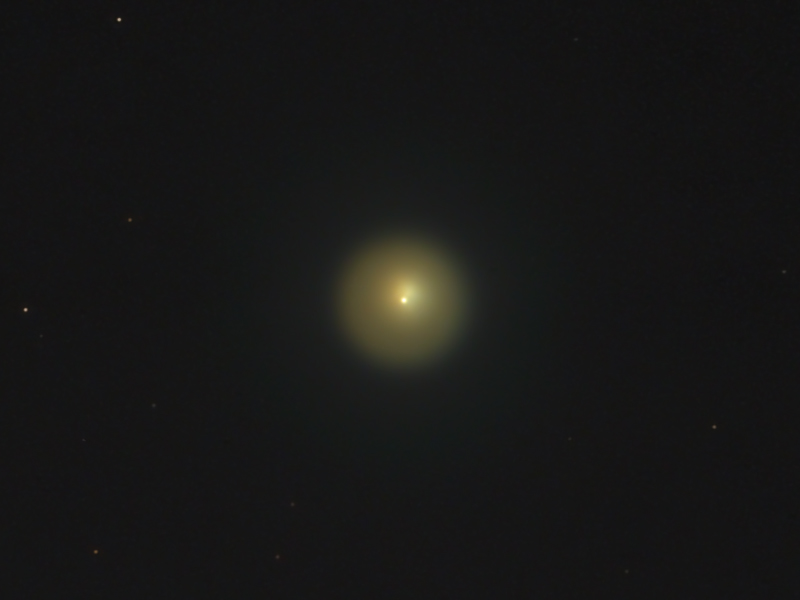
|
Credit & Copyright: Igor Chekalin
Explanation:
What's happened to Comet Holmes?
A normally docile comet discovered over 100 years ago,
Comet 17P/Holmes
suddenly became nearly one million times brighter last week,
possibly over just a few hours.
In astronomical terms, the comet brightened from
magnitude 17, only visible through a good telescope, to magnitude 3, becoming
visible with the unaided eye.
Comet Holmes
had already passed its closest to the Sun in 2007 May outside the orbit of Mars
and was
heading back out
near Jupiter's orbit when the outburst occurred.
The comet's sudden brightening is likely due to some sort of sunlight-reflecting
outgassing event, possibly related to ice melting over
a gas-filled cavern, or possibly even a partial breakup of the comet's nucleus.
Pictured above
through a small telescope last Thursday,
Comet Holmes appeared as a fuzzy yellow spot,
significantly larger in angular size than Earth-atmosphere
blurred distant stars.
Although
Comet Holmes' orbit will
place it
in northern hemisphere skies for the next two years,
whether it will best be viewed through a
telescope or
sunglasses remains unknown.
|
January February March April May June July August September October November December |
| ||||||||||||||||||||||||||||||||||||||||||||||||
NASA Web Site Statements, Warnings, and Disclaimers
NASA Official: Jay Norris. Specific rights apply.
A service of: LHEA at NASA / GSFC
& Michigan Tech. U.
Based on Astronomy Picture
Of the Day
Publications with keywords: comet
Publications with words: comet
See also:
- Comet C/2025 F2 SWAN
- APOD: 2025 February 5 Б Comet G3 ATLAS Setting over a Chilean Hill
- APOD: 2025 February 2 Б Comet G3 ATLAS Disintegrates
- APOD: 2025 January 28 Б Comet G3 ATLAS over Uruguay
- APOD: 2025 January 26 Б The Many Tails of Comet G3 ATLAS
- Comet G3 ATLAS: a Tail and a Telescope
- APOD: 2025 January 21 Б Comet ATLAS over Brasilia
